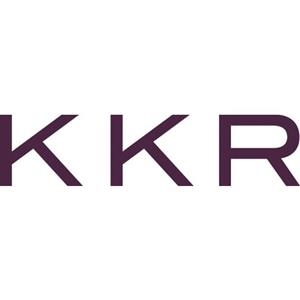Asia's Trillion-Dollar Infrastructure Boom Fuels Global Capital Influx
October 1, 2025, 9:41 am
Global investment giants intensify focus on Asian infrastructure. Stonepeak aims for $4 billion in new capital, following a swift $3.3 billion fund close. KKR seeks to exceed its prior $6.4 billion for its third Asia fund. I Squared Capital and Energy Infrastructure Partners also expand, targeting digital infrastructure, energy transition, and logistics. Asia requires $1.7 trillion annually for growth and climate resilience. This signals a generational, multi-decade capital deployment opportunity across the continent.
Global investors pour billions into Asia's infrastructure. Capital flows reflect a massive, sustained opportunity. Investment firms deploy significant funds. They target essential services and emerging technologies. This trend underscores Asia's critical role in global economic growth.
Stonepeak, a U.S.-based investor, leads this charge. The firm seeks $4 billion for its second Asia-focused infrastructure fund. This ambition follows rapidly on its first fund. Stonepeak closed that fund at $3.3 billion just one year prior. Its swift capital deployment shows strong investor confidence. The new fund launched in May. It has already secured $1 billion. This represents a quarter of its target. Stonepeak began its Asia investments in 2019. It manages $76.3 billion in assets globally.
Other major players join the push. KKR has begun fundraising for its third pan-Asia infrastructure fund. Its target size remains undisclosed. However, it expects to surpass its previous $6.4 billion fund. KKR utilizes private equity strategies. It targets businesses with infrastructure-like stability. The firm maintains about 30 infrastructure investment professionals in Asia. KKR recently acquired ProTen. This Australian firm is a large broiler chicken grower. It exemplifies KKR's strategy for stable, yield-generating assets.
These combined efforts add over $10 billion in deployable capital. This new money targets the Asian region. The available capital in Asia's infrastructure sector stood at $30 billion last year. This new infusion significantly boosts that figure. Global funds see immense potential. They address Asia's growing infrastructure needs.
Asia faces substantial infrastructure demands. The region requires $1.7 trillion annually. This spending is necessary from 2023 to 2030. It will maintain growth momentum. It will eradicate poverty. It will respond to climate change. Geopolitical uncertainties also drive increased infrastructure spending. Climate change targets further amplify this need. Countries seek to sustain economic growth. They aim to improve living standards.
Investment opportunities extend beyond traditional sectors. Global investors increasingly target new areas. Digital infrastructure presents a key focus. Data centers exemplify this trend. Logistics also draws significant attention. Cold storage logistics, in particular, is a growing area. Changing diets fuel protein demand across Asia. This directly boosts cold storage needs. Rapid urbanization drives a generational investment opportunity. This multi-decade trend fuels significant capital deployment.
I Squared Capital expands its Asian footprint. The firm entered Asia in 2012. It plans to add ten new staff members. This expansion will occur over the next two to three years. I Squared Capital will open a Seoul office. This new office underscores its commitment. The firm identifies long-term growth drivers. These include energy transition, digital infrastructure, and logistics.
Switzerland-based Energy Infrastructure Partners (EIP) also enters the market. EIP launched its first Asia office in Singapore in June. The firm focuses on energy transition assets. It aims to raise and invest capital in this vital sector. EIP will originate deals in key markets. These include Australia, Japan, and Korea. Singapore serves as its strategic launchpad. It facilitates relationship building and capital deployment.
The investment focus remains on stability. Funds seek assets offering consistent yields. They also target capital growth. Infrastructure assets provide this long-term stability. This makes them attractive to global investors. They offer predictable returns over decades.
The rapid urbanization across Asia creates massive demand. Millions migrate to cities. They require housing, transport, power, and connectivity. Digital infrastructure becomes paramount. High-speed internet and data centers are essential. They support modern economies. Renewable energy projects are also critical. They address climate goals. They ensure energy security.
Global firms compete for these opportunities. They bring expertise and capital. This fuels innovation and development. Asia's infrastructure landscape transforms rapidly. It moves towards a more connected, sustainable future. This multi-faceted investment wave continues to grow. It will define the region's economic trajectory for decades. The capital flowing into Asia is not merely funding projects. It is building the future.
Global investors pour billions into Asia's infrastructure. Capital flows reflect a massive, sustained opportunity. Investment firms deploy significant funds. They target essential services and emerging technologies. This trend underscores Asia's critical role in global economic growth.
Stonepeak, a U.S.-based investor, leads this charge. The firm seeks $4 billion for its second Asia-focused infrastructure fund. This ambition follows rapidly on its first fund. Stonepeak closed that fund at $3.3 billion just one year prior. Its swift capital deployment shows strong investor confidence. The new fund launched in May. It has already secured $1 billion. This represents a quarter of its target. Stonepeak began its Asia investments in 2019. It manages $76.3 billion in assets globally.
Other major players join the push. KKR has begun fundraising for its third pan-Asia infrastructure fund. Its target size remains undisclosed. However, it expects to surpass its previous $6.4 billion fund. KKR utilizes private equity strategies. It targets businesses with infrastructure-like stability. The firm maintains about 30 infrastructure investment professionals in Asia. KKR recently acquired ProTen. This Australian firm is a large broiler chicken grower. It exemplifies KKR's strategy for stable, yield-generating assets.
These combined efforts add over $10 billion in deployable capital. This new money targets the Asian region. The available capital in Asia's infrastructure sector stood at $30 billion last year. This new infusion significantly boosts that figure. Global funds see immense potential. They address Asia's growing infrastructure needs.
Asia faces substantial infrastructure demands. The region requires $1.7 trillion annually. This spending is necessary from 2023 to 2030. It will maintain growth momentum. It will eradicate poverty. It will respond to climate change. Geopolitical uncertainties also drive increased infrastructure spending. Climate change targets further amplify this need. Countries seek to sustain economic growth. They aim to improve living standards.
Investment opportunities extend beyond traditional sectors. Global investors increasingly target new areas. Digital infrastructure presents a key focus. Data centers exemplify this trend. Logistics also draws significant attention. Cold storage logistics, in particular, is a growing area. Changing diets fuel protein demand across Asia. This directly boosts cold storage needs. Rapid urbanization drives a generational investment opportunity. This multi-decade trend fuels significant capital deployment.
I Squared Capital expands its Asian footprint. The firm entered Asia in 2012. It plans to add ten new staff members. This expansion will occur over the next two to three years. I Squared Capital will open a Seoul office. This new office underscores its commitment. The firm identifies long-term growth drivers. These include energy transition, digital infrastructure, and logistics.
Switzerland-based Energy Infrastructure Partners (EIP) also enters the market. EIP launched its first Asia office in Singapore in June. The firm focuses on energy transition assets. It aims to raise and invest capital in this vital sector. EIP will originate deals in key markets. These include Australia, Japan, and Korea. Singapore serves as its strategic launchpad. It facilitates relationship building and capital deployment.
The investment focus remains on stability. Funds seek assets offering consistent yields. They also target capital growth. Infrastructure assets provide this long-term stability. This makes them attractive to global investors. They offer predictable returns over decades.
The rapid urbanization across Asia creates massive demand. Millions migrate to cities. They require housing, transport, power, and connectivity. Digital infrastructure becomes paramount. High-speed internet and data centers are essential. They support modern economies. Renewable energy projects are also critical. They address climate goals. They ensure energy security.
Global firms compete for these opportunities. They bring expertise and capital. This fuels innovation and development. Asia's infrastructure landscape transforms rapidly. It moves towards a more connected, sustainable future. This multi-faceted investment wave continues to grow. It will define the region's economic trajectory for decades. The capital flowing into Asia is not merely funding projects. It is building the future.


